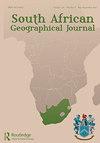测试免费提供的Landsat 8业务陆地成像仪(OLI)和OLI泛锐化图像在区分商业森林物种中的价值
IF 1.4
4区 社会学
Q3 GEOGRAPHY
引用次数: 0
摘要
遥感数据在森林应用中的应用日益广泛。虽然高空间分辨率传感器在测绘和监测商业森林方面取得了成功,但其成本、可及性和空间覆盖范围仍然是一个重大挑战。因此,有必要利用偏最小二乘判别分析(PLS-DA)研究新的和改进的免费传感器在森林物种定位中的价值。本研究对南非夸祖鲁-纳塔尔省7种主要人工林树种的新免费获取和改进的原始和全锐化Landsat 8 Operational Land Imager (OLI)图像进行了鉴定。使用陆地卫星(OLI)图像获得的精度与WorldView-2图像进行了基准测试。结果表明,原始带和泛锐化带成功圈定了商品林种,总体分类精度分别为79%和77.8%。虽然这些精度低于高分辨率Worldview-2图像数据所达到的86.5%,但我们的研究结果表明,Landsat 8 OLI的较低空间分辨率(30 m)在区分森林物种方面产生了合理的表现。因此,由于Landsat 8 OLI的免费获取、广泛的空间覆盖范围以及可追溯到20世纪70年代的丰富档案,它可用于提供现有和历史的初步林业评估。本文章由计算机程序翻译,如有差异,请以英文原文为准。
Testing the value of freely available Landsat 8 Operational Land Imager (OLI) and OLI pan-sharpened imagery in discriminating commercial forest species
ABSTRACT The adoption of remotely sensed data in forest applications has grown significantly. Whereas high spatial resolution sensors have been successful in mapping and monitoring commercial forests, their cost, accessibility, and spatial coverage remain a critical challenge. Hence, it is was necessary to investigate the value of new and improved freely available sensors in forest species mapping using the Partial Least Square-Discriminant Analysis (PLS-DA). This study evaluated the performance of new freely available and improved raw and pan-sharpened Landsat 8 Operational Land Imager (OLI) imagery in discriminating seven key plantation forest species in KwaZulu-Natal, South Africa. Accuracies achieved using the Landsat (OLI) imagery were benchmarked against the WorldView-2 imagery. Results show that raw and pan-sharpened bands successfully delineated commercial forest species, with overall classification accuracies of 79% and 77.8%, respectively. Although these accuracies were lower than the 86.5% achieved from the higher resolution Worldview-2 image data, our findings demonstrate that the Landsat 8 OLI’s lower spatial resolution (30 m) generated a plausible performance in discriminating forest species. Hence, Landsat 8 OLI could be useful in providing existing and historical preliminary forestry assessment due to its free availability, wide spatial coverage as well as its rich archive dating back to the 1970s.
求助全文
通过发布文献求助,成功后即可免费获取论文全文。
去求助
来源期刊

South African Geographical Journal
GEOGRAPHY-
CiteScore
3.40
自引率
7.10%
发文量
25
期刊介绍:
The South African Geographical Journal was founded in 1917 and is the flagship journal of the Society of South African Geographers. The journal aims at using southern Africa as a region from, and through, which to communicate geographic knowledge and to engage with issues and themes relevant to the discipline. The journal is a forum for papers of a high academic quality and welcomes papers dealing with philosophical and methodological issues and topics of an international scope that are significant for the region and the African continent, including: Climate change Environmental studies Development Governance and policy Physical and urban Geography Human Geography Sustainability Tourism GIS and remote sensing
 求助内容:
求助内容: 应助结果提醒方式:
应助结果提醒方式:


